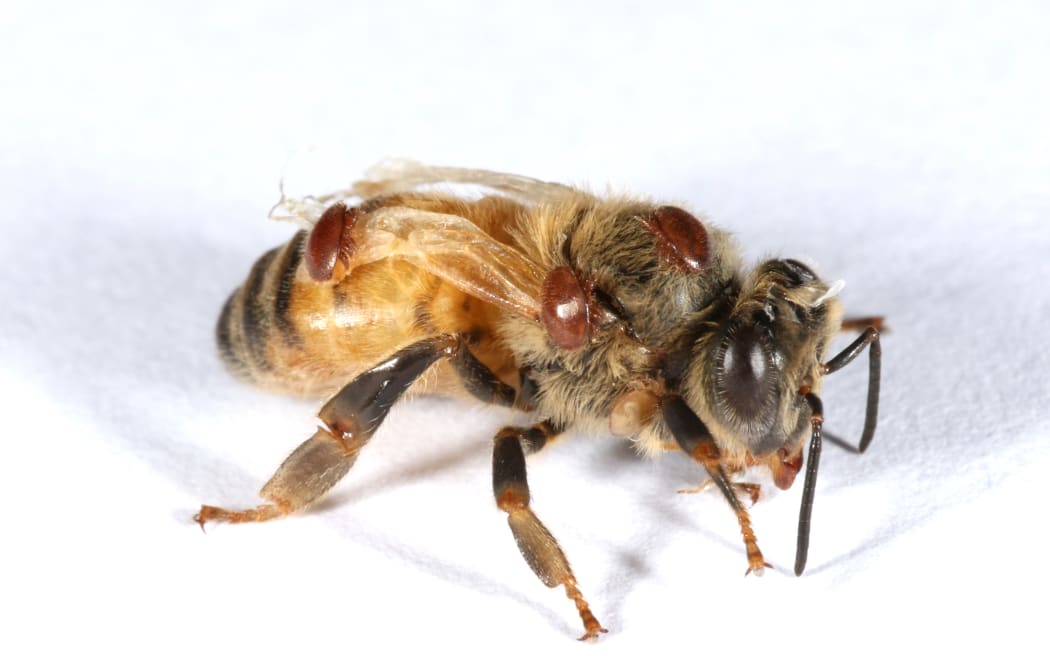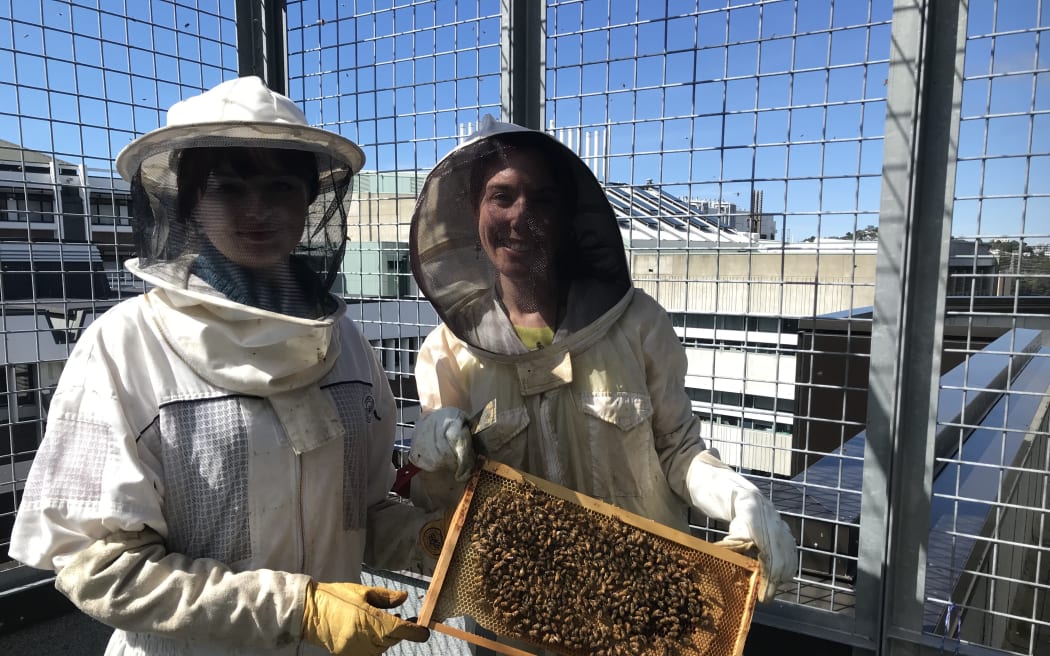
Photo: Phil Lester
Varroa destructor mites are bad news for honey bees.
Not only do they attack the bees by chewing on a vital organ called the fat body, but they also introduce problematic viruses to the hive – such as deformed wing virus, which does exactly what it says on the tin.
Beekeepers worldwide must treat for varroa mites several times a year just to keep their numbers in check. They mostly use pesticides, which can have damaging effects on the bees and environment. The mites are also beginning to develop resistance to pesticides, but a new treatment method may be just on the horizon.
Follow Our Changing World on Apple Podcasts, Spotify, Stitcher, iHeartRADIO, Google Podcasts, RadioPublic or wherever you listen to your podcasts
RNA interference
This is what PhD candidates Zoe Smeele and Rose McGruddy have been researching. Under the supervision of Professor Phil Lester, they’ve been working with US biotechnology company Greenlight Biosciences to investigate how their new treatment for varroa mites works.
The treatment is based on a technique called RNA interference. An interesting bio-hack that researchers have figured out is how they turn a natural virus defence mechanism in the cell against one of the mite’s vital proteins.
Greenlight Biosciences were able to identify a working treatment that reduced mite numbers in field trials in the states but turned to the New Zealand researchers for help in uncovering exactly how it works.

Zoe Smeele (left) and Rose McGruddy (right). Photo: Claire Concannon / RNZ
Mini-hive experiments
In one of the research labs in the School of Biological Sciences at Te Herenga Waka Victoria University of Wellington, Zoe and Rose have been conducting mini-hive experiments. Their participants are larval stage bees taken from the hives on the roof of the building, infected with varroa mites.
The nurse bees that feed the larvae are given plastic pouches full of sugar water with the RNA interference treatment inside. What the team has discovered is that instead of killing the mites, what the treatment does is severely impact the mites’ reproduction.

Rose McGruddy (left) and Zoe Smeele (right) with honey bees. Photo: Claire Concannon / RNZ
But what about real beehives?
Initial field trials with New Zealand beekeepers have showed some promise, but also highlighted that there’s much to learn in terms of the dosage per bee. A next round of trials is just getting underway, and this will also include RFID tagging of bees to monitor any impacts at the individual bee level.
Listen to the episode to get up close to a hive and learn about the stages of bee development. Plus, hear how RNA interference treatment works, and why researchers and some beekeepers are excited about its potential.

Wax-capped brood cells, and cells containing larvae. Photo: Claire Concannon / RNZ
To learn more:
-
Professor Phil Lester and his research group have also done a lot of work tackling invasive wasps.
-
Learn more about beekeeping from this interview on Nine to Noon.
-
Afternoons covered the discovery of varroa mites in Australia in 2022.


